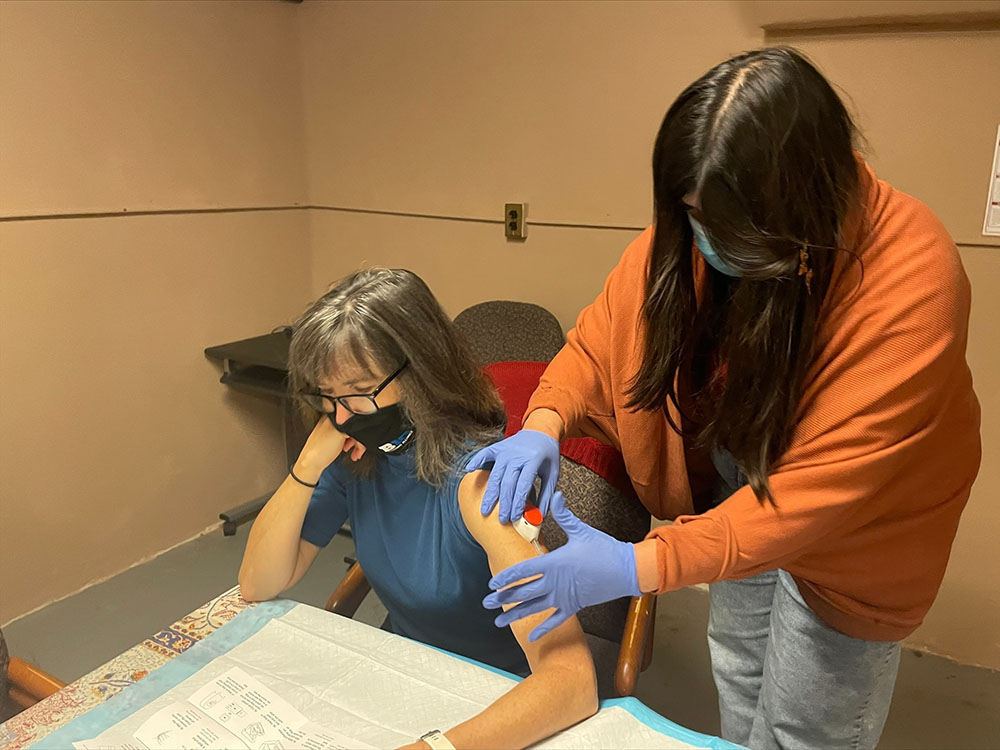Current Research
Integrated IoT Sensing and Edge Computing Coupled with a Bayesian Network Model for Exposure Assessment and Targeted Remediation of Vapor Intrusion (CLEAR, Project E2)
Exposure to volatile organic compounds (VOCs) poses significant health risks, particularly for mothers and children. VOCs can infiltrate the soil and groundwater in post-industrial cities, leading to harmful indoor air exposure through vapor intrusion. Project E2, part of the Center for Leadership in Environmental Awareness and Research (CLEAR), focuses on addressing VOC contamination in urban environments, particularly those related to Superfund sites. The project’s goal is to create an advanced system that combines Internet of Things (IoT) sensors, edge computing, and a Bayesian network model to better assess and remediate VOC vapor intrusion (VI).
The project is based on the idea that this integrated approach will be faster, more cost-effective, and more accurate than traditional methods. The system will use IoT data, combined with surveys and environmental models, to create a tool for assessing exposure and guiding targeted cleanups. Additionally, the project will develop new materials to improve VOC absorption, enhancing the effectiveness of the remediation process. Project E2 aims to shift from conventional offline methods to a data-driven approach, offering a comprehensive platform for monitoring, analyzing, and reducing VOC risks. This project is funded by the National Institutes of Health (NIH).
Predicting and Communicating PFAS Exposure Risks from Rural Private Wells
Predicting and Communicating PFAS Exposure Risks from Rural Private Wells
In collaboration with communities across the United States, this project is developing predictive tools that estimate the risk of exposure to a certain class of chemicals, per- and polyfluoroalkyl substances (PFAS), in private well water in the United States. PFAS have been found in groundwater across the country, but little is known about the risks of exposure for rural communities that depend on private wells for their drinking water. Our goal in this project is to create a scalable platform to predict the occurrence of PFAS in private wells. The impact of soil amendments on exposure risks as well as the relative importance of different PFAS sources to the risk of private well contamination nationwide will be evaluated. Additionally, resources will be created to communicate the risks of PFAS exposure in private well water and to instruct state and local decision-makers on how to use the integrated modeling platform. This research is funded by the United States Environmental Protection Agency.
Water Infrastructure to Improve Childhood Outcomes and Decrease Childhood Lead Exposure
This research is investigating how lead in private well water in the United States affects childhood development. It includes a “big data” element that leverages routine blood lead surveillance along with water system, census, property tax, juvenile justice, and education data to assess the effects of lead in private well water on children’s exposure to lead and their behavior later in life. It also includes a field component, in which households relying on private well water are being recruited for assessment of lead exposure risks. The project also will recommend approaches for mitigating the risks of exposure to lead in households relying on private well water. This research is funded by the United States Environmental Protection Agency.

Targeting Homes with High Lead Exposure Risks by Leveraging Big Data and Advanced Machine-Learning Algorithms
In partnership with communities in Indiana and North Carolina, this is creating a web-based app and mapper – called “Pb Reduction in Critical Homes” or PREDICT – that will identify houses where children are at high risk of exposure to environmental lead. The app also will predict which interventions are likely to be the most effective. This project is funded by the United States Department of Housing and Urban Development.
Water and Health Infrastructure, Resilience, and Learning (WHIRL)
In collaboration with Wayne State University and the University of Michigan, we are using machine learning tools to develop a predictive model of drinking water health risk using both drinking water system and public health data. These tools may be used to create an early warning system for drinking water risks in vulnerable areas. This work is funded by the National Science Foundation and the North Carolina Sea Grant and Water Resources Research Institute.
Evaluating the Effectiveness of Point-Of-Use (POU) Water Filters for Mitigating Waterborne Contaminants from Private Drinking Water Wells in North Carolina
In partnership with North Carolina communities, this project is evaluating the effectiveness of POU filters to remove drinking water contaminants, including lead, per- and polyfluoroalkyl substances (PFASs), and microbial contaminants, from private well water. This work is funded by the North Carolina Policy Collaboratory.
Water and Health in North Carolina Native American Communities
This project focuses on the Native American communities of Robeson County, North Carolina. Robeson County is 43% Native American. It is also the poorest county in the state and routinely ranks lowest among all NC counties in health indicators. Robeson County’s freshwater supplies are heavily polluted. Previous studies and our preliminary research have identified drinking water contaminants including waterborne pathogens, per- and polyfluoroalkyl substances (PFAS), and heavy metals including lead. Our long-term goal is to identify the role of inequitable access to clean, safe, affordable drinking water in the manifest health disparities among Robeson County residents and to develop solutions to eliminate those inequities. This project is part of the Community Based Participatory Research (CBPR) Program, a collaborative approach to research that involves engaging community members and organizations. Our team is working closely with American Indian Mothers, Inc., a non-profit organization in Robeson County, NC.